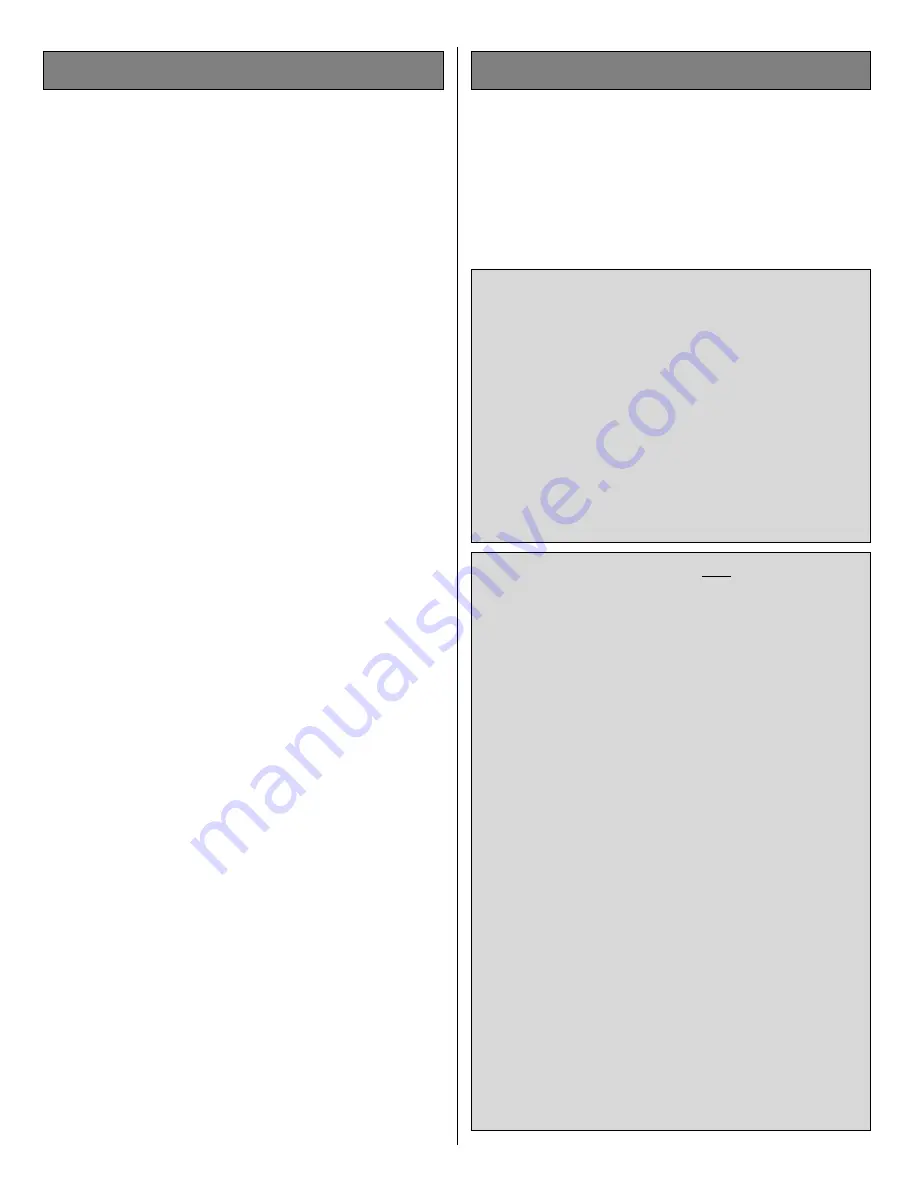
Read and abide by the following Academy of Model
Aeronautics Official Safety Code:
GENERAL
1. I will not fly my model aircraft in sanctioned
events, air shows, or model flying demonstrations
until it has been proven to be airworthy by having
been previously successfully flight tested.
2. I will not fly my model aircraft higher than
approximately 400 feet within 3 miles of an airport
without notifying the airport operator. I will give
right of way to and avoid flying in the proximity of
full scale aircraft. Where necessary an observer shall
be used to supervise flying to avoid having models
fly in the proximity of full scale aircraft.
3. Where established, I will abide by the safety
rules for the flying site I use and I will not willfully
and deliberately fly my models in a careless,
reckless and/or dangerous manner.
7. I will not fly my model unless it is identified
with my name and address or AMA number, on or in
the model.
9. I will not operate models with pyrotechnics (any
device that explodes, burns, or propels a projectile
of any kind).
RADIO CONTROL
1. I will have completed a successful radio
equipment ground check before the first flight of a
new or repaired model.
2. I will not fly my model aircraft in the presence
of spectators until I become a qualified flier, unless
assisted by an experienced helper.
3. I will perform my initial turn after takeoff away from
the pit or spectator areas and I will not thereafter fly over
pit or spectator areas, unless beyond my control.
4. I will operate my model using only radio control
frequencies currently allowed by the Federal
Communications Commission...
End of AMA Safety Code
These flying instructions are
not
an endorsement for
learning to fly on your own, but are printed so you
can know what to expect and what to concentrate on
while learning under the tutelage of your instructor.
Further, these flight instructions may be referenced
once you finally do begin flying on your own.
CAUTION
(THIS APPLIES TO ALL R/C AIRPLANES):
If, while flying, you notice an alarming or unusual
sound such as a low-pitched “buzz,” this may
indicate control surface
flutter
. Flutter occurs when a
control surface (such as an aileron or elevator) or a
flying surface (such as a wing or stab) rapidly vibrates
up and down (thus causing the noise). In extreme
cases, if not detected immediately, flutter can actually
cause the control surface to detach or the flying
surface to fail, thus causing loss of control followed
by an impending crash. The best thing to do when
flutter is detected is to slow the model
immediately
by reducing power, then land as soon as safely
possible. Identify which surface fluttered (so the
problem may be resolved) by checking all the servo
grommets for deterioration or signs of vibration.
Make certain all pushrod linkages are secure and free
of play. If it fluttered once, under similar
circumstances it will probably flutter again unless the
problem is fixed. Some things which can cause flutter
are; Excessive hinge gap; Not mounting control horns
solidly; Poor fit of clevis pin in horn; Side-play of wire
pushrods caused by large bends; Excessive free play
in servo gears; Insecure servo mounting; and one of
the most prevalent causes of flutter; Flying an over-
powered model at excessive speeds.
IMPORTANT:
If you do insist on flying on your own,
you
must
be aware of your proximity to R/C club
sites. If there is an R/C site within six miles of where
you are flying and if you are operating your model
on the same frequency as somebody else, there is a
strong
possibility that one or both models will crash
due to radio interference. There is
great
potential for
an out-of-control model to cause property damage
and/or severe personal injury. We
strongly
urge you
to fly at a R/C club site where frequency control is
in effect so you can be confident you will be the
only one flying on your channel.
Flying
AMA Safety Code (excerpt)
27


































